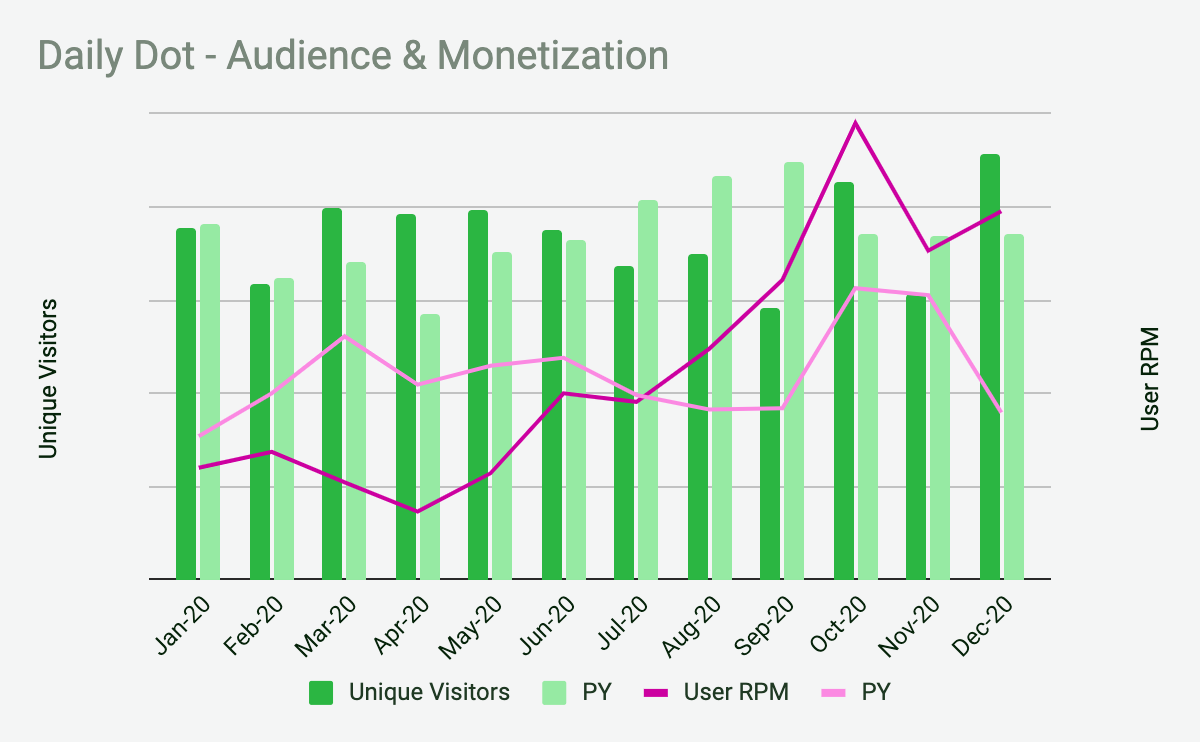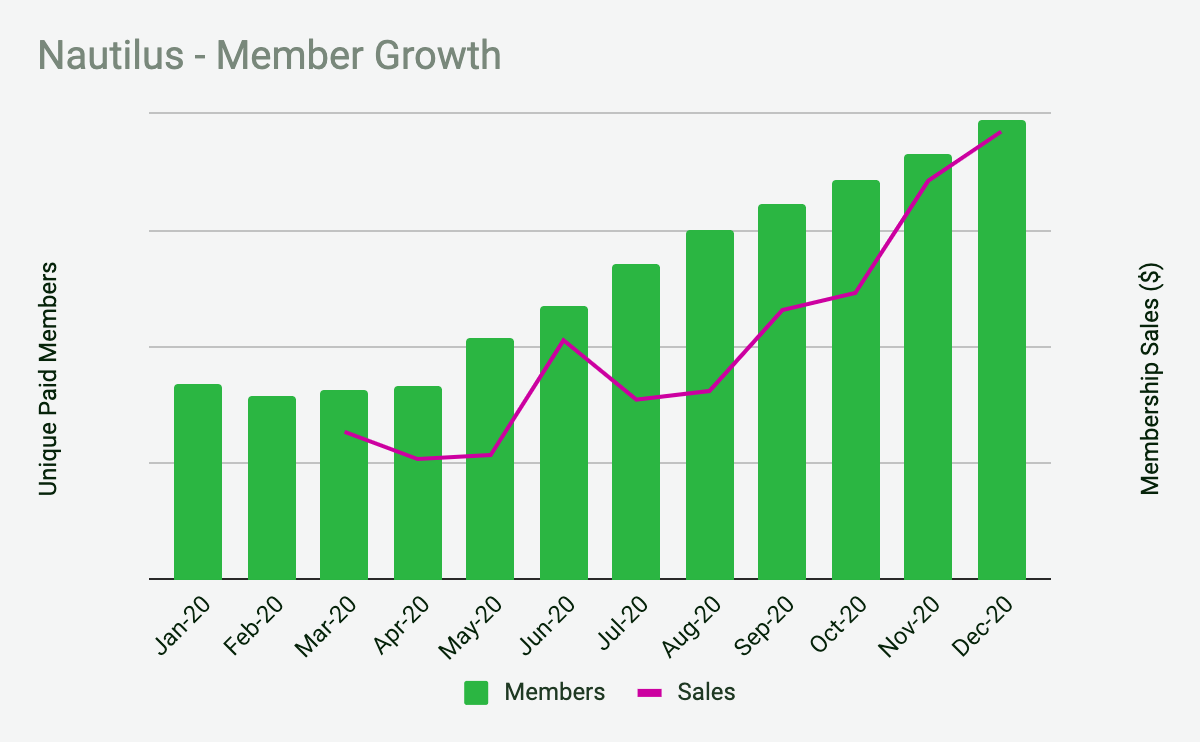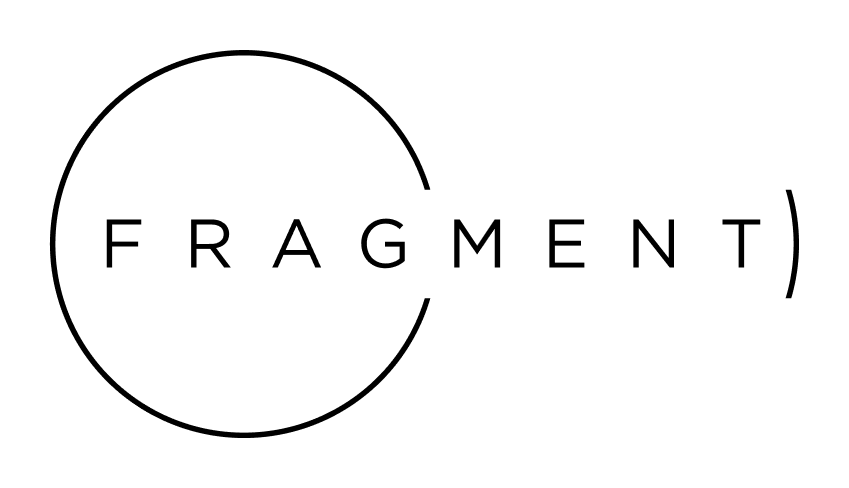Fragment was formed at the beginning of 2020 from the combination of Daily Dot and Nautilus magazine, with the express business purpose of pursuing the member media model by combining the strengths of each property. For transparency, we’ve posted here (with minimal editing) our end of the year updates sent to the shareholders of each publication.
It has obviously been a crazy year.
Results have been good. Despite an unprecedented decline in the world economy in March, we estimate that we still increased revenue 50% over the two companies combined revenues last year.
Below, I’ll get into detail on how exactly that happened at each company.
Daily Dot
We started out to some extent in rebuilding mode, as the couple of partners managing our programmatic ad stack completely screwed the pooch simultaneously last Q4. So the top priorities for the year were rebuilding the site and monetization stack, and of course, dealing with the pandemic. When it rains…
The good news is that, after major wobbles earlier this year, as you’ll see below, we’ve managed to right the ship in a lot of ways—though we are, of course, not done yet.

We’ve seen very good traffic for most of the year, starting at 8 million visitors and ending at a 2-year high of 11.4 million. Our programmatic revenue is much stronger than ever before on the new stack (more on which below). Unfortunately, we have seen Affiliate and Direct sales slip significantly as a result of massively increased competition in streaming coverage and struggles with Google. While we are working to fix these issues, they are not our primary focus because I do not think fixing them is going to be the long-term best path for Daily Dot.
Obviously this is, I think, the third or fourth time we’ve had to rebuild the Daily Dot’s business, so we are trying to work on directions that will make our business model more stable. My view is that the instability has had 2 primary causes: 1) partner dependence in our monetization stack; and 2) platform dependence in our distribution strategy (which drives both programmatic and affiliate revenue directly). I believe we’ve substantially mitigated the former and are working hard on the latter.
Vis-a-vis our partner dependence, we have fully rebuilt and brought in-house our programmatic ad stack and now have direct relationships with dozens of ad partners, and as such, a meltdown with one or two partners (such as we had last Q4) cannot hurt us as much as we’ve seen in the past.
Long term, however, this is still not a line of business I feel very good about, because: 1) Cookie death is coming and that may cause us very serious issues on this front, no matter how many partners we have; 2) Advertising is dominated by Google and Facebook and will continue to be for the foreseeable future. There’s no way we can compete with them successfully.
Removing our platform dependence and reliance on programmatic advertising long term is more complicated. First off, we’ve mitigated platform dependence by adding significant new traffic sources (aggregators) on the one hand, and by moving to a better tech platform and getting more tech resources via our platform, FreePress, which allows us to be more responsive to platform changes. How well that works we’ll soon see as we’re currently struggling with Google traffic and working on a variety of tech fixes for that.
The larger solution to removing these dependencies entirely and getting on to a long-term growth path is a much bigger undertaking and requires a fundamental change in our business model away from advertising and into direct reader revenue.
This is something we’ve been working on transitioning to for some time now, and we’re very close. To some extent, the transition has been slow because we’ve had to spend so much time shoring up the old model. That said, I think there are 3 components to completing the transition.
1) We need the technology and team in place to sell subscriptions and other products. I’m pleased to say this is currently all in place and working well with Nautilus. We are working on integrating now with Daily Dot and should launch a membership program early in the year.
2) As we’ve chased traffic over the last few years, I’m sorry to admit that Daily Dot has strayed from its original editorial mission. To make a membership model work, we need a crystal clear brand and value proposition, so we are currently working through strategies to clarify and implement practices to make sure we have that to offer. We aspire to creating content that our community considers must-have and which justifies membership.
3) We need to build a much tighter relationship with our readers, and that means email and push. We have been pushing growth in those channels actively this year and have more than 220,000 subscribers now. Unfortunately, we started having deliverability issues in mid-April and have gone through many fixes with no luck. It seems that we are going to need to replace our email service provider wholesale to fix it, which we expect to complete that transition by the beginning of the year. We are also refocusing our direct sales efforts around email where rates are higher and we believe we can compete more effectively.
As we get the above done, we should be ready to start testing membership options in Q1. It’s not going to change everything overnight. I expect a lot of trial and error and we’ll be starting from scratch, so it’s going to take time to have an impact. That said, once we’ve got it working, I believe it has big growth potential and is sustainable.
We have made real progress, but our work is still cut out for us. In six months, I hope to be able to report that we are in the early stages but have a solid foundation in a new business model.
Nautilus
I’m very pleased to be able to share that we’re ending a very difficult year on a pretty high note. November subscription sales matched Nautilus’s best month before “the troubles,” and the member side of the business (excluding sponsor sales and their associated costs) was within a few thousand dollars of cash flow positive. For the last six months, in fact, subscriptions have grown 60%, and sales have more than doubled year over year, increasing an average 140%.

It took a little longer to start ramping up than I would have liked at the beginning of the year, between having more technical hurdles than we expected integrating Nautilus after acquisition, on the one hand, and the pandemic on the other. That said, since May — when we did start consistently ramping up marketing — we have been on a generally very strong trajectory.
Our marketing channels right now are primarily Facebook and Google. We don’t necessarily expect that these will be our best channels long-term, but they do offer the best tools for testing, and the really big change from the last six months is that we did extensive price testing and have settled on a sensible and sustainable pricing structure. Starting in late October, we formally moved the Nautilus pricing up to $9.99 per month or $59 per year—$89 per year with print.
There may be a dip in sales for December—we had a nice surge from Black Friday through Cyber Week, but we see no reason why we shouldn’t be able to continue ramping up sales over the next several months to reach cash flow positive in the first quarter and then start seeing net profit expansion—which we expect to reinvest into growth. Right now, we’re working on adding more concurrent promotions and channels, additional tests to fine-tune the pricing, and our first ancillary offerings to further ramp acquisition and increase ARPU.
Subscriber growth is our number one priority, of course, but obviously, editorial, sponsorship, and financing are each important areas of progress as well.
Editorial Review
Our highlights this year were exceptional traffic based on original stories that readers positively do not find in any other magazine. It’s our editorial voice that defines us and allows us to stand out from the crowd.
It is no surprise that our biggest story, with over 1 million pageviews, was related to the pandemic—a Q&A with pioneering zoonotic expert Dennis Carroll. But it attracted a wide audience, which no other interview with Carroll did, because of our team’s unique approach, steeped in research, which drew out Carroll’s expertise not only on zoonosis and virology, but his insights on how science has crossed with Washington politics and international cultures.
Our pandemic coverage included other original stories with surprising viewpoints that drew over 100,000 pageviews each. One was written by a former nuclear submarine officer on life in isolation, and another by a mathematician on calculating the odds of the best time to go to the supermarket. Our cover feature on issue 33 was about how the pandemic has underscored our interconnection with the environment and featured a brilliant cover of bats drawn in the outlines of city skyscrapers by Jorge Colombo. It drew a wealth of praise, including from science writer Amanda Gefter, who called it the most beautifully written piece on the pandemic.
Outside the echo chamber of the pandemic, we scored big with readers with a fascinating essay by legendary film editor Walter Murch, written as an open letter to his granddaughter, about how, essentially, oxygen evolved on Earth, led to the bounty of plants and animals, and how the processes that produced the life-giving force now, with climate change, threaten to take it away. It was shared across the internet by renowned writers in fiction, criticism, and journalism, not to mention grateful readers.
Readers in the science community, who themselves number in the hundreds of thousands, also praised Nautilus after reading “An Existential Crisis in Neuroscience.” The piece aimed to take the hype out of brain mapping and was written by neuroscientist Grigori Guitchounts, a scientist whose writing has been nurtured by our editorial team for the past two years. The episode underscored the importance of our integrity in the science community, a key to our success.
Scientists and readers also praised our journal cover stories on a new form of fusion energy, a new name for “Anthropocene” based on solar energy, and our clear and accessible explainers, written by top physicists themselves, about new insights into quantum reality, occasioned by the discoveries this year of black hole collisions.
One writer and scientist whose essays were among our top stories this year, told Kevin, “To my thinking, Nautilus is among the best publications going, a glimmer of hope at an otherwise rather hopeless moment. In so many areas of human possibility, so many of the ways we humans have it in us to be estimable—curiosity, empiricism, soulfulness—we are doing very poorly right now, yet Nautilus is pressing on in just those directions.”
Sponsorship
The Nautilus Oceans Channel was launched in May with a sponsorship from the Bertarelli Foundation. The Schmidt Ocean Institute joined the Oceans partnership consortium in August, and in October, the 5 Media Foundation joined Oceans with a three-year commitment. In April, we published a series of profiles for our new Women in Science & Engineering Channel with sponsorship from the American Geoscience Institute and the Lyda Hill Foundation.
